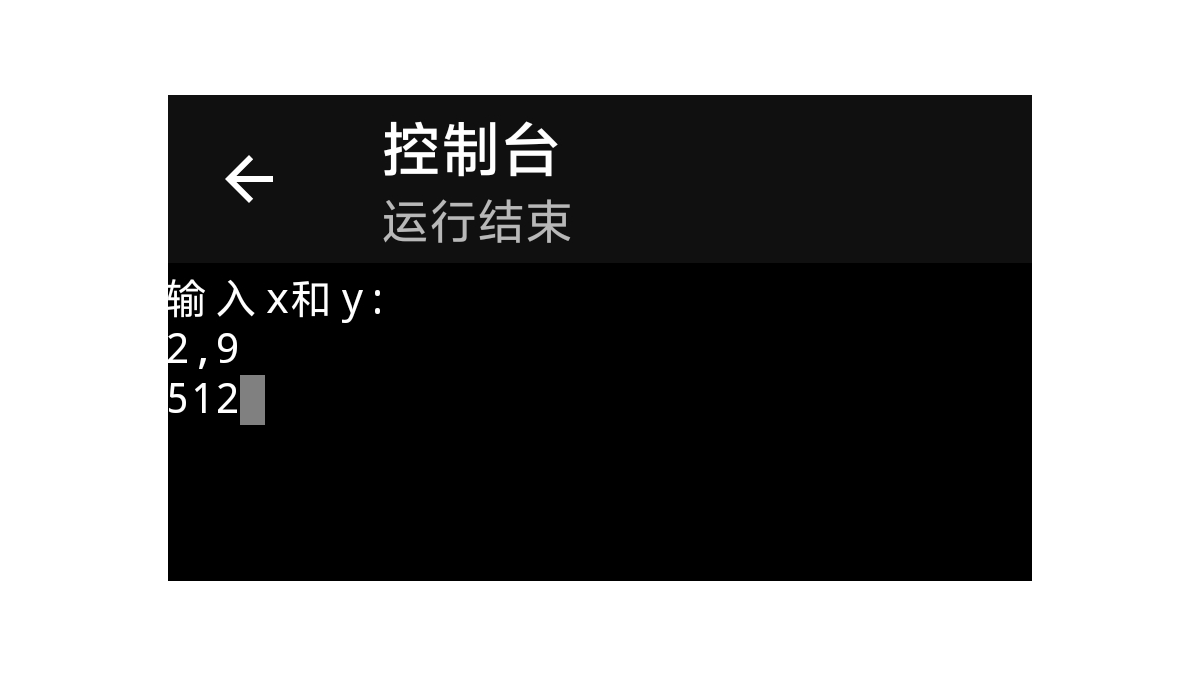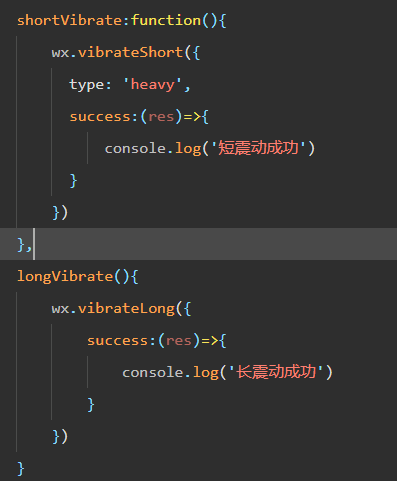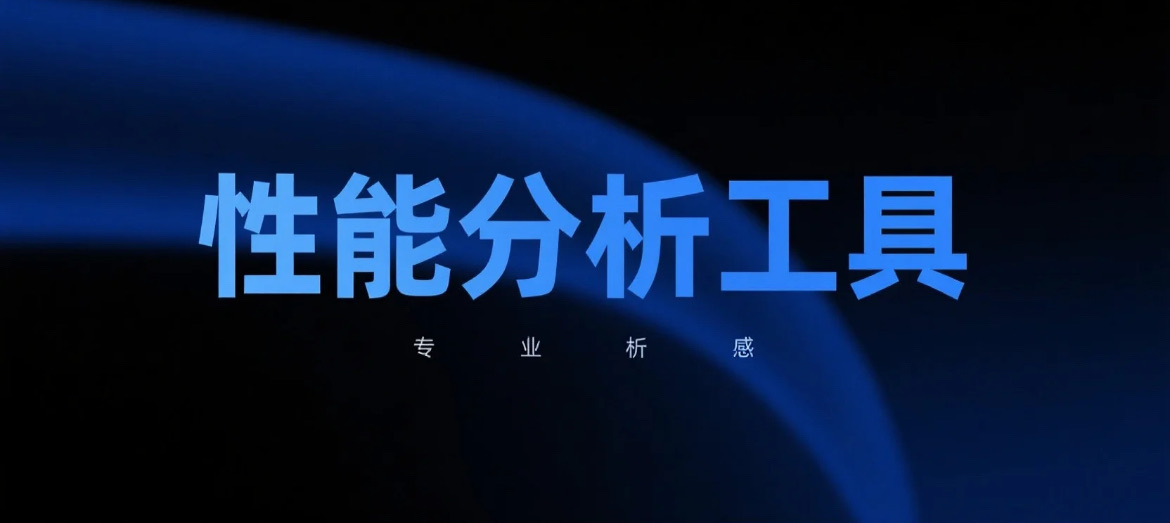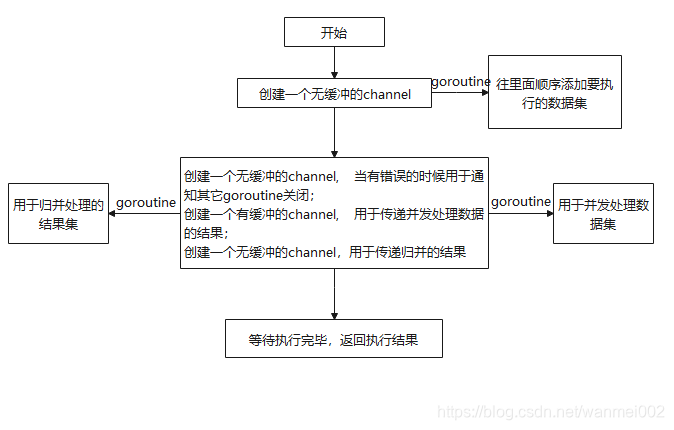HarmonyOS 相对布局(RelativeContainer)
1. HarmonyOS 相对布局(RelativeContainer)
文档中心:https://developer.huawei.com/consumer/cn/doc/harmonyos-guides-V5/arkts-layout-development-relative-layout-V5
RelativeContainer为采用相对布局的容器,支持容器内部的子元素设置相对位置关系。子元素支持指定兄弟元素作为锚点,也支持指定父容器作为锚点,基于锚点做相对位置布局。下图是一个RelativeContainer的概念图,图中的虚线表示位置的依赖关系。

import { TitleBar } from '../../components/common/TitleBar'
import { router } from '@kit.ArkUI'
import { RouterParams } from 'zzslib'//子组件相对父组件位置
let sonRule1: Record<string,
Record<string, string | VerticalAlign | HorizontalAlign>> = {'top': {'anchor': '__container__','align': VerticalAlign.Top},'left': {'anchor': '__container__','align': HorizontalAlign.Start}
}
let sonRule2: Record<string,
Record<string, string | VerticalAlign | HorizontalAlign>> = {'top': {'anchor': '__container__','align': VerticalAlign.Top},'right': {'anchor': '__container__','align': HorizontalAlign.End}
}
let sonRule3: Record<string,
Record<string, string | VerticalAlign | HorizontalAlign>> = {'bottom': {'anchor': '__container__','align': VerticalAlign.Bottom},'right': {'anchor': '__container__','align': HorizontalAlign.End},
}//父组件样式
@Extend(RelativeContainer)
function extendFather() {.width(300).height(300).margin({ 'left': 20 }).border({'width': 2,'color': '#6699FF'})
}//子组件样式
@Extend(Row)
function extendSon() {.justifyContent(FlexAlign.Center).width(100).height(100).backgroundColor("#FF3333")
}//子组件样式
@Extend(Row)
function extendSon3() {.width('100%').padding({top:10,bottom:10}).justifyContent(FlexAlign.Center).backgroundColor("#FF66FF")
}@Entry
@Component
struct RelativePage {@State pageTitle: string = "RelativeContainer"aboutToAppear() {try {this.pageTitle = (router.getParams() as RouterParams).title} catch (e) {}}build() {Column() {TitleBar({ pageTitle: $pageTitle })Text('相对布局 (RelativeContainer)')RelativeContainer() {Row() {Text('son1')}.id("row1").alignRules(sonRule1).extendSon()Row() {Text('son2')}.id("row2").alignRules(sonRule2).extendSon()Row() {Text('son3')}.id("row3").alignRules(sonRule3).extendSon3()}.id("father_id").extendFather()}}
}
1.1. 相对布局示意图

子元素并不完全是上图中的依赖关系。比如,Item4可以以Item2为依赖锚点,也可以以RelativeContainer父容器为依赖锚点。
1.2. 基本概念
(1)锚点:通过锚点设置当前元素基于哪个元素确定位置。
(2)对齐方式:通过对齐方式,设置当前元素是基于锚点的上中下对齐,还是基于锚点的左中右对齐。
1.3. 锚点设置
锚点设置是指设置子元素相对于父元素或兄弟元素的位置依赖关系。在水平方向上,可以设置left、middle、right的锚点。在竖直方向上,可以设置top、center、bottom的锚点。为了明确定义锚点,必须为RelativeContainer及其子元素设置ID,用于指定锚点信息。ID默认为“container”,其余子元素的ID通过id属性设置。未设置ID的子元素在RelativeContainer中不会显示。
说明:在使用锚点时要注意子元素的相对位置关系,避免出现错位或遮挡的情况。
1.3.1. RelativeContainer父组件为锚点,__container__代表父容器的ID。
let AlignRus:Record<string,Record<string,string|VerticalAlign|HorizontalAlign>> = {'top': { 'anchor': '__container__', 'align': VerticalAlign.Top },'left': { 'anchor': '__container__', 'align': HorizontalAlign.Start }
}
let AlignRue:Record<string,Record<string,string|VerticalAlign|HorizontalAlign>> = {'top': { 'anchor': '__container__', 'align': VerticalAlign.Top },'right': { 'anchor': '__container__', 'align': HorizontalAlign.End }
}
let Mleft:Record<string,number> = { 'left': 20 }
let BWC:Record<string,number|string> = { 'width': 2, 'color': '#6699FF' }
RelativeContainer() {Row().width(100).height(100).backgroundColor("#FF3333").alignRules(AlignRus).id("row1")Row().width(100).height(100).backgroundColor("#FFCC00").alignRules(AlignRue).id("row2")
}.width(300).height(300)
.margin(Mleft)
.border(BWC)
1.3.2. 以兄弟元素为锚点。
let AlignRus:Record<string,Record<string,string|VerticalAlign|HorizontalAlign>> = {'top': { 'anchor': '__container__', 'align': VerticalAlign.Top },'left': { 'anchor': '__container__', 'align': HorizontalAlign.Start }
}
let RelConB:Record<string,Record<string,string|VerticalAlign|HorizontalAlign>> = {'top': { 'anchor': 'row1', 'align': VerticalAlign.Bottom },'left' : { 'anchor': 'row1', 'align': HorizontalAlign.Start }
}
let Mleft:Record<string,number> = { 'left': 20 }
let BWC:Record<string,number|string> = { 'width': 2, 'color': '#6699FF' }
RelativeContainer() {Row().width(100).height(100).backgroundColor("#FF3333").alignRules(AlignRus).id("row1")Row().width(100).height(100).backgroundColor("#FFCC00").alignRules(RelConB).id("row2")
}.width(300).height(300)
.margin(Mleft)
.border(BWC)
1.3.3. 子组件锚点可以任意选择,但需注意不要相互依赖。
子组件锚点可以任意选择,但需注意不要相互依赖。
@Entry
@Component
struct Index {build() {Row() {RelativeContainer() {Row(){Text('row1')}.justifyContent(FlexAlign.Center).width(100).height(100).backgroundColor('#ff3339ff').alignRules({top: {anchor: "__container__", align: VerticalAlign.Top},left: {anchor: "__container__", align: HorizontalAlign.Start}}).id("row1")Row(){Text('row2')}.justifyContent(FlexAlign.Center).width(100).backgroundColor('#ff298e1e').alignRules({top: {anchor: "__container__", align: VerticalAlign.Top},right: {anchor: "__container__", align: HorizontalAlign.End},bottom: {anchor: "row1", align: VerticalAlign.Center},}).id("row2")Row(){Text('row3')}.justifyContent(FlexAlign.Center).height(100).backgroundColor('#ffff6a33').alignRules({top: {anchor: "row1", align: VerticalAlign.Bottom},left: {anchor: "row1", align: HorizontalAlign.Start},right: {anchor: "row2", align: HorizontalAlign.Start}}).id("row3")Row(){Text('row4')}.justifyContent(FlexAlign.Center).backgroundColor('#ffff33fd').alignRules({top: {anchor: "row3", align: VerticalAlign.Bottom},left: {anchor: "row1", align: HorizontalAlign.Center},right: {anchor: "row2", align: HorizontalAlign.End},bottom: {anchor: "__container__", align: VerticalAlign.Bottom}}).id("row4")}.width(300).height(300).margin({left: 50}).border({width:2, color: "#6699FF"})}.height('100%')}
}
1.4. 设置相对于锚点的对齐位置
设置了锚点之后,可以通过align设置相对于锚点的对齐位置。
在水平方向上,对齐位置可以设置为HorizontalAlign.Start、HorizontalAlign.Center、HorizontalAlign.End。

在竖直方向上,对齐位置可以设置为VerticalAlign.Top、VerticalAlign.Center、VerticalAlign.Bottom。

1.4.1. 子组件位置偏移
子组件经过相对位置对齐后,位置可能还不是目标位置,开发者可根据需要进行额外偏移设置offset。
@Entry
@Component
struct Index {build() {Row() {RelativeContainer() {Row(){Text('row1')}.justifyContent(FlexAlign.Center).width(100).height(100).backgroundColor("#FF3333").alignRules({top: {anchor: "__container__", align: VerticalAlign.Top},left: {anchor: "__container__", align: HorizontalAlign.Start}}).id("row1")Row(){Text('row2')}.justifyContent(FlexAlign.Center).width(100).backgroundColor("#FFCC00").alignRules({top: {anchor: "__container__", align: VerticalAlign.Top},right: {anchor: "__container__", align: HorizontalAlign.End},bottom: {anchor: "row1", align: VerticalAlign.Center},}).offset({x:-40,y:-20}).id("row2")Row(){Text('row3')}.justifyContent(FlexAlign.Center).height(100).backgroundColor("#FF6633").alignRules({top: {anchor: "row1", align: VerticalAlign.Bottom},left: {anchor: "row1", align: HorizontalAlign.End},right: {anchor: "row2", align: HorizontalAlign.Start}}).offset({x:-10,y:-20}).id("row3")Row(){Text('row4')}.justifyContent(FlexAlign.Center).backgroundColor("#FF9966").alignRules({top: {anchor: "row3", align: VerticalAlign.Bottom},bottom: {anchor: "__container__", align: VerticalAlign.Bottom},left: {anchor: "__container__", align: HorizontalAlign.Start},right: {anchor: "row1", align: HorizontalAlign.End}}).offset({x:-10,y:-30}).id("row4")Row(){Text('row5')}.justifyContent(FlexAlign.Center).backgroundColor("#FF66FF").alignRules({top: {anchor: "row3", align: VerticalAlign.Bottom},bottom: {anchor: "__container__", align: VerticalAlign.Bottom},left: {anchor: "row2", align: HorizontalAlign.Start},right: {anchor: "row2", align: HorizontalAlign.End}}).offset({x:10,y:20}).id("row5")Row(){Text('row6')}.justifyContent(FlexAlign.Center).backgroundColor('#ff33ffb5').alignRules({top: {anchor: "row3", align: VerticalAlign.Bottom},bottom: {anchor: "row4", align: VerticalAlign.Bottom},left: {anchor: "row3", align: HorizontalAlign.Start},right: {anchor: "row3", align: HorizontalAlign.End}}).offset({x:-15,y:10}).backgroundImagePosition(Alignment.Bottom).backgroundImageSize(ImageSize.Cover).id("row6")}.width(300).height(300).margin({left: 50}).border({width:2, color: "#6699FF"})}.height('100%')}
}

1.4.2. 多种组件的对齐布局
Row、Column、Flex、Stack等多种布局组件,可按照RelativeContainer组件规则进行对其排布。
@Entry
@Component
struct Index {@State value: number = 0build() {Row() {RelativeContainer() {Row().width(100).height(100).backgroundColor('#ff33ffcc').alignRules({top: {anchor: "__container__", align: VerticalAlign.Top},left: {anchor: "__container__", align: HorizontalAlign.Start}}).id("row1")Column().width('50%').height(30).backgroundColor(0xAFEEEE).alignRules({top: {anchor: "__container__", align: VerticalAlign.Top},left: {anchor: "__container__", align: HorizontalAlign.Center}}).id("row2")Flex({ direction: FlexDirection.Row }) {Text('1').width('20%').height(50).backgroundColor(0xF5DEB3)Text('2').width('20%').height(50).backgroundColor(0xD2B48C)Text('3').width('20%').height(50).backgroundColor(0xF5DEB3)Text('4').width('20%').height(50).backgroundColor(0xD2B48C)}.padding(10).backgroundColor('#ffedafaf').alignRules({top: {anchor: "row2", align: VerticalAlign.Bottom},left: {anchor: "__container__", align: HorizontalAlign.Start},bottom: {anchor: "__container__", align: VerticalAlign.Center},right: {anchor: "row2", align: HorizontalAlign.Center}}).id("row3")Stack({ alignContent: Alignment.Bottom }) {Text('First child, show in bottom').width('90%').height('100%').backgroundColor(0xd2cab3).align(Alignment.Top)Text('Second child, show in top').width('70%').height('60%').backgroundColor(0xc1cbac).align(Alignment.Top)}.margin({ top: 5 }).alignRules({top: {anchor: "row3", align: VerticalAlign.Bottom},left: {anchor: "__container__", align: HorizontalAlign.Start},bottom: {anchor: "__container__", align: VerticalAlign.Bottom},right: {anchor: "row3", align: HorizontalAlign.End}}).id("row4")}.width(300).height(300).margin({left: 50}).border({width:2, color: "#6699FF"})}.height('100%')}
}

1.4.3. 组件尺寸
子组件尺寸大小不会受到相对布局规则的影响。若子组件某个方向上设置两个或以上alignRules时最好不设置此方向尺寸大小,否则对齐规则确定的组件尺寸与开发者设置的尺寸可能产生冲突。
@Entry
@Component
struct Index {build() {Row() {RelativeContainer() {Row(){Text('row1')}.justifyContent(FlexAlign.Center).width(100).height(100).backgroundColor("#FF3333").alignRules({top: {anchor: "__container__", align: VerticalAlign.Top},left: {anchor: "__container__", align: HorizontalAlign.Start}}).id("row1")Row(){Text('row2')}.justifyContent(FlexAlign.Center).width(100).backgroundColor("#FFCC00").alignRules({top: {anchor: "__container__", align: VerticalAlign.Top},right: {anchor: "__container__", align: HorizontalAlign.End},bottom: {anchor: "row1", align: VerticalAlign.Center},}).id("row2")Row(){Text('row3')}.justifyContent(FlexAlign.Center).height(100).backgroundColor("#FF6633").alignRules({top: {anchor: "row1", align: VerticalAlign.Bottom},left: {anchor: "row1", align: HorizontalAlign.End},right: {anchor: "row2", align: HorizontalAlign.Start}}).id("row3")Row(){Text('row4')}.justifyContent(FlexAlign.Center).backgroundColor("#FF9966").alignRules({top: {anchor: "row3", align: VerticalAlign.Bottom},bottom: {anchor: "__container__", align: VerticalAlign.Bottom},left: {anchor: "__container__", align: HorizontalAlign.Start},right: {anchor: "row1", align: HorizontalAlign.End}}).id("row4")Row(){Text('row5')}.justifyContent(FlexAlign.Center).backgroundColor("#FF66FF").alignRules({top: {anchor: "row3", align: VerticalAlign.Bottom},bottom: {anchor: "__container__", align: VerticalAlign.Bottom},left: {anchor: "row2", align: HorizontalAlign.Start},right: {anchor: "row2", align: HorizontalAlign.End}}).id("row5")Row(){Text('row6')}.justifyContent(FlexAlign.Center).backgroundColor('#ff33ffb5').alignRules({top: {anchor: "row3", align: VerticalAlign.Bottom},bottom: {anchor: "row4", align: VerticalAlign.Bottom},left: {anchor: "row3", align: HorizontalAlign.Start},right: {anchor: "row3", align: HorizontalAlign.End}}).id("row6").backgroundImagePosition(Alignment.Bottom).backgroundImageSize(ImageSize.Cover)}.width(300).height(300).margin({left: 50}).border({width:2, color: "#6699FF"})}.height('100%')}
}

1.5. 场景实例
相对布局内的子元素相对灵活,只要在RelativeContainer容器内,均可以通过alignRules进行相应的位置移动。
@Entry
@Component
struct Index {build() {Row() {RelativeContainer() {Row().width(100).height(100).backgroundColor('#FF3333').alignRules({top: { anchor: '__container__', align: VerticalAlign.Top }, //以父容器为锚点,竖直方向顶头对齐middle: { anchor: '__container__', align: HorizontalAlign.Center } //以父容器为锚点,水平方向居中对齐}).id('row1') //设置锚点为row1Row() {Image($r('app.media.icon'))}.height(100).width(100).alignRules({top: { anchor: 'row1', align: VerticalAlign.Bottom }, //以row1组件为锚点,竖直方向低端对齐left: { anchor: 'row1', align: HorizontalAlign.Start } //以row1组件为锚点,水平方向开头对齐}).id('row2') //设置锚点为row2Row().width(100).height(100).backgroundColor('#FFCC00').alignRules({top: { anchor: 'row2', align: VerticalAlign.Top }}).id('row3') //设置锚点为row3Row().width(100).height(100).backgroundColor('#FF9966').alignRules({top: { anchor: 'row2', align: VerticalAlign.Top },left: { anchor: 'row2', align: HorizontalAlign.End },}).id('row4') //设置锚点为row4Row().width(100).height(100).backgroundColor('#FF66FF').alignRules({top: { anchor: 'row2', align: VerticalAlign.Bottom },middle: { anchor: 'row2', align: HorizontalAlign.Center }}).id('row5') //设置锚点为row5}.width(300).height(300).border({ width: 2, color: '#6699FF' })}.height('100%').margin({ left: 30 })}
}
相关文章:

HarmonyOS 相对布局(RelativeContainer)
1. HarmonyOS 相对布局(RelativeContainer) 文档中心:https://developer.huawei.com/consumer/cn/doc/harmonyos-guides-V5/arkts-layout-development-relative-layout-V5 RelativeContainer为采用相对布局的容器,支持容器内部的子元素设…...

webpack5搭建react脚手架详细步骤
1. 初始化项目 首先,创建一个新目录并初始化项目: bash mkdir create-react cd create-react pnpm init --y git init 这里使用pnpm作为包管理工具,因为它在处理依赖和速度上表现更好。 2. 安装React和TypeScript 安装React和React-DOM…...

速盾:高防cdn怎么拦截恶意ip?
高防CDN(Content Delivery Network)是一种用于防御网络攻击和提供高可用性的服务。它通过分发网络流量,将用户的请求导向最近的服务器,从而提高网站的加载速度和稳定性。然而,不可避免地,有些恶意IP地址会试…...

太阳能面板分割系统:训练自动化
太阳能面板分割系统源码&数据集分享 [yolov8-seg-EfficientHead&yolov8-seg-vanillanet等50全套改进创新点发刊_一键训练教程_Web前端展示] 1.研究背景与意义 项目参考ILSVRC ImageNet Large Scale Visual Recognition Challenge 项目来源AAAI Globa…...

C++笔记---位图
1. 位图的概念 位图(Bitmap)是一种基于位操作的数据结构,用于表示一组元素的集合信息。它通常是一个仅包含0和1的数组,每个元素对应一个二进制位,若该元素存在,则对应的位为1;若不存在ÿ…...

ABC370
## A - Raise Both Hands (模拟) 题意:输入l,r,如果l1r0输出yes,l0r1输出no,否则输出Invalid 代码: #include<bits/stdc.h> using namespace std; typedef long long ll; vo…...

C语言[求x的y次方]
C语言——求x的y次方 这段 C 代码的目的是从用户输入获取两个整数 x 和 y ,然后计算 x 的 y 次幂(不过这里有个小错误,实际计算的是 x 的 (y - 1) 次幂,后面会详细说),最后输出结果。 代码如下: #include…...

JavaScript part2
一.前言 前面我们讲了一下js的基础语法,但是这些还是远远不够的,我们要想操作标签,实现一个动态且好看的页面,就得学会BOM和DOM,这些都是浏览器和页面的,这样我们才能实现一个好看的页面 二.BOM对象 BOM…...

HarmonyOS开发 - 本地持久化之实现LocalStorage实例
用户首选项为应用提供Key-Value键值型的数据处理能力,支持应用持久化轻量级数据,并对其修改和查询。数据存储形式为键值对,键的类型为字符串型,值的存储数据类型包括数字型、字符型、布尔型以及这3种类型的数组类型。 说明&#x…...

【C++打怪之路Lv12】-- 模板进阶
#1024程序员节|征文# 🌈 个人主页:白子寰 🔥 分类专栏:重生之我在学Linux,C打怪之路,python从入门到精通,数据结构,C语言,C语言题集👈 希望得到您…...

第23周Java主流框架入门-SpringMVC 2.RESTful开发风格
课程笔记:RESTful 开发风格 课程介绍 本节课程介绍 RESTful 开发风格,以及如何在 Spring MVC 中应用这种开发模式。传统 MVC 开发通过 Servlet、JSP 和 Java Bean 实现前后端交互,而 RESTful 开发提供了一种新的理念,更适合现代…...

QT枚举类型转字符串和使用QDebug<<重载输出私有枚举类型
一 将QT自带的枚举类型转换为QString 需要的头文件: #include <QMetaObject> #include <QMetaEnum> 测试代码 const QMetaObject *metaObject &QImage::staticMetaObject;QMetaEnum metaEnum metaObject->enumerator(metaObject->indexOf…...

手机柔性屏全贴合视觉应用
在高科技日新月异的今天,手机柔性显示屏作为智能手机市场的新宠,以其独特的可弯曲、轻薄及高耐用性特性引领着行业潮流。然而,在利用贴合机加工这些先进显示屏的过程中,仍面临着诸多技术挑战。其中,高精度对位、应力控…...

《Python游戏编程入门》注-第3章3
《Python游戏编程入门》的“3.2.4 Mad Lib”中介绍了一个名为“Mad Lib”游戏的编写方法。 1 游戏玩法 “Mad Lib”游戏由玩家根据提示输入一些信息,例如男人姓名、女人姓名、喜欢的食物以及太空船的名字等。游戏根据玩家输入的信息编写出一个故事,如图…...

Netty-TCP服务端粘包、拆包问题(两种格式)
前言 最近公司搞了个小业务,需要使用TCP协议,我这边负责服务端。客户端是某个设备,客户端传参格式、包头包尾等都是固定的,不可改变,而且还有个蓝牙传感器,透传数据到这个设备,然后通过这个设备…...

centos安装指定版本的jenkins
打开jenkins镜像包官网,找到自己想要安装的版本,官网地址:https://mirrors.tuna.tsinghua.edu.cn/jenkins/redhat-stable 下载指定版本安装包: wget https://mirrors.tuna.tsinghua.edu.cn/jenkins/redhat-stable/jenkins-2.452.…...
,一分钟后自动退出)
QT 周期性的杀死一个进程(软件),一分钟后自动退出
1.原因:某软件开机自启动很烦,搞一个程序干掉这个自启动的软件 2.QT代码 main.cpp #include "KillXXX.h" #include <QtWidgets/QApplication>int main(int argc, char *argv[]) {QApplication a(argc, argv);KillXXX k;return a.exec…...

MySQL任意版本安装卸载和数据库原理图绘制
MYSQL任意版本安装和卸载 安装: 1、解压文件 --- 不能出现中文路径 2、在解压目录(安装目录)下: 1>.创建data文件夹 2>.创建配置文件my.txt 然后修改成ini格式 3、修改配置文件 basedirD:\\mysql\\mysql-5.7.28-winx64…...

技术成神之路:设计模式(二十三)解释器模式
相关文章:技术成神之路:二十三种设计模式(导航页) 介绍 解释器模式(Interpreter Pattern)是一种行为设计模式,用于定义一种语言的文法表示,并提供一个解释器来处理这种文法。它用于处理具有特定语法或表达…...

2024软考《软件设计师》-Python专题知识(含历年真题解析)
自2020年之后,软考软件设计师考试在综合知识部分开始增加Python编程语言相关考点,每年会考2~3分的样子。本文将结合近几年常考的内容,扩展一下Pyhton的基础知识!考前看一看,或许有所帮助。 一、基础语法 标识符 第一…...

生成xcframework
打包 XCFramework 的方法 XCFramework 是苹果推出的一种多平台二进制分发格式,可以包含多个架构和平台的代码。打包 XCFramework 通常用于分发库或框架。 使用 Xcode 命令行工具打包 通过 xcodebuild 命令可以打包 XCFramework。确保项目已经配置好需要支持的平台…...
使用rpicam-app通过网络流式传输视频)
树莓派超全系列教程文档--(62)使用rpicam-app通过网络流式传输视频
使用rpicam-app通过网络流式传输视频 使用 rpicam-app 通过网络流式传输视频UDPTCPRTSPlibavGStreamerRTPlibcamerasrc GStreamer 元素 文章来源: http://raspberry.dns8844.cn/documentation 原文网址 使用 rpicam-app 通过网络流式传输视频 本节介绍来自 rpica…...

大语言模型如何处理长文本?常用文本分割技术详解
为什么需要文本分割? 引言:为什么需要文本分割?一、基础文本分割方法1. 按段落分割(Paragraph Splitting)2. 按句子分割(Sentence Splitting)二、高级文本分割策略3. 重叠分割(Sliding Window)4. 递归分割(Recursive Splitting)三、生产级工具推荐5. 使用LangChain的…...

微信小程序 - 手机震动
一、界面 <button type"primary" bindtap"shortVibrate">短震动</button> <button type"primary" bindtap"longVibrate">长震动</button> 二、js逻辑代码 注:文档 https://developers.weixin.qq…...

页面渲染流程与性能优化
页面渲染流程与性能优化详解(完整版) 一、现代浏览器渲染流程(详细说明) 1. 构建DOM树 浏览器接收到HTML文档后,会逐步解析并构建DOM(Document Object Model)树。具体过程如下: (…...

【android bluetooth 框架分析 04】【bt-framework 层详解 1】【BluetoothProperties介绍】
1. BluetoothProperties介绍 libsysprop/srcs/android/sysprop/BluetoothProperties.sysprop BluetoothProperties.sysprop 是 Android AOSP 中的一种 系统属性定义文件(System Property Definition File),用于声明和管理 Bluetooth 模块相…...

微服务商城-商品微服务
数据表 CREATE TABLE product (id bigint(20) UNSIGNED NOT NULL AUTO_INCREMENT COMMENT 商品id,cateid smallint(6) UNSIGNED NOT NULL DEFAULT 0 COMMENT 类别Id,name varchar(100) NOT NULL DEFAULT COMMENT 商品名称,subtitle varchar(200) NOT NULL DEFAULT COMMENT 商…...

多模态大语言模型arxiv论文略读(108)
CROME: Cross-Modal Adapters for Efficient Multimodal LLM ➡️ 论文标题:CROME: Cross-Modal Adapters for Efficient Multimodal LLM ➡️ 论文作者:Sayna Ebrahimi, Sercan O. Arik, Tejas Nama, Tomas Pfister ➡️ 研究机构: Google Cloud AI Re…...

重启Eureka集群中的节点,对已经注册的服务有什么影响
先看答案,如果正确地操作,重启Eureka集群中的节点,对已经注册的服务影响非常小,甚至可以做到无感知。 但如果操作不当,可能会引发短暂的服务发现问题。 下面我们从Eureka的核心工作原理来详细分析这个问题。 Eureka的…...
)
Android第十三次面试总结(四大 组件基础)
Activity生命周期和四大启动模式详解 一、Activity 生命周期 Activity 的生命周期由一系列回调方法组成,用于管理其创建、可见性、焦点和销毁过程。以下是核心方法及其调用时机: onCreate() 调用时机:Activity 首次创建时调用。…...
